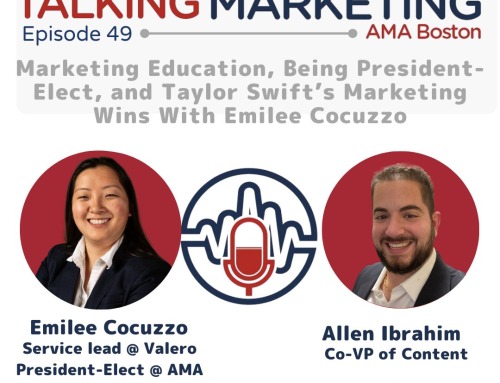When we hire sales reps, it’s mostly about who they know. When we research a company, we check out the CEO’s profile on business platforms and browse sites like Glassdoor to see employee impressions. We value user testimonials because they validate a product.
Do You See the Pattern Emerging?
Relationship, credibility, culture and validation – it is really all about people. People buy technology from people. People influence people with their opinions. People run companies and build corporate culture. In short, people buy based on how they feel about a brand. Therefore, emotion and trust play a big role in our purchasing decisions – from cars and watches to software and wearable devices. To quote Seth Godin, “People do not buy goods and services. They buy relations, stories and magic.”
Best Practices to Bring a Technology Brand to Life
1. Share your CEO or founder’s story: Behind every major tech brand there’s a human face. Think the late Steve Jobs, Bill Gates, Larry Ellison, Jeff Bezos, Elon Musk. And the list goes on. The latest CEO brand under development is that of Microsoft’s Satya Nadella. This feature in Fortune is an example of what he’s like as an individual, how he copes with a tight schedule and how he makes time to visit future innovators. We also learned that Satya once surrendered his Green Card for his wife and that he likes to spend time with students. These snippets make him human and likeable. Every innovator has had life experiences that shaped his or her management style – from being a fighter pilot to a math teacher turned CEO. Leaders are passionate about innovation – tell a story that illustrates where that began. They have hobbies – playing in a band to rock climbing. Show what makes them tick. Why not share a small piece of their personal life with influencers – via stories, pictures or videos. All you need is a handful of well thought-out narratives in key media to bring out your leader’s personality, which could also serve as an ice-breaker in customer meetings.
2. Spotlight the engineers: Generally, it’s the founder or founders who had the disruptive idea. However, as a company scales, it’s the engineers who are building on that idea, keeping the company innovative and making sure the product maintains its competitive edge. For example, we hear that robots will take over the world with artificial intelligence (AI) coming on strong. In reality, it’s about the people who are creating these cutting-edge technologies and discovering interesting applications.
Why not focus on the engineers and technologists who are developing interesting products? Showcase not just their technical expertise, but their hunger for new technology or new experiences outside of work. Invite them to do a :30 video interview or ghost-write a short blog on their passion. I have had the privilege of working with engineers and developers who are intelligent and adventurous – from being a race car driver and dirt-road biker to kite surfer and beer maker. And it’s this passion they bring to work and helps expand a company’s competitive edge. Companies often fear that by spotlighting engineers, competitors will poach their talent. Well, if you keep your employees happy and rewarded, it’s hard to steal them. And in case you hadn’t noticed, thanks to social media, there’s no keeping your talent under wraps anymore.
3. Build and empower brand ambassadors: Employees are your biggest assets. They reflect your culture and are potentially your best brand champions. Each is interacting daily with a variety of people – friends, family and potential prospects. Arm them with updated messaging, news and relevant information they can share with their peers on traditional and digital channels. The more they talk about their company and experiences, the more like-minded talent will flock to your company. Have them attend community or industry events. Let them show their enthusiasm.
I often conduct company-wide coaching on social media on how individuals and functional teams can leverage the power of social media. We talk about how to post thoughtful comments and engage in relevant conversation without overtly “selling.” In addition to helping the company, these ambassadors get to build their individual thought leadership profiles and be seen and heard by their peers.
4. Focus on the human side of technology: We all know it’s the people, not the technology, that makes a brand successful. Of course, you need to tell your technology story. However, as tech marketers, we should also bake in programs to spotlight the people behind the brand. Technology for technology’s sake doesn’t generate the headlines that founders and engineers crave. Sending out data sheets on digital platforms doesn’t result in social engagement either. One of the ways to explain your product is to focus on customer pain points and show how you helped solve the problem. Better yet, celebrate the product’s impact on lives, society or planet. Tell a story. Include anecdotes about how the team created the product – failures as well as successes. Develop branded and non-branded content that’s interesting and inspirational. Add humor to your emails and social cards. Granted, some technologies are very hard to explain, especially complex enterprise software. Create a narrative to tell how the technology touches our lives everyday – banking, shopping, storing memories.
5. Contribute to society: Giving back to the community is a business imperative. It not only humanizes a brand but supports a cause that’s important to employees. For example, we often buy from stores that are giving back to the community or schools. Similarly, people expect technology organizations, especially large enterprises, to be good neighbors, doing things such as helping improve STEM initiatives and contributing during natural disasters. People like buying from brands that show empathy. Doing simple things like partnering with nonprofits such as food banks, encouraging employees to volunteer in soup kitchens or conducting a toy drive for the holiday season makes a difference in people’s lives. You could promote sustainability or aid a cause your employees care about.
Granted, you may not be selling your product directly. However, the good will and accompanying word of mouth helps a business succeed and boosts employee morale. In conclusion, incorporating all or few of these steps into your corporate marketing strategy will go a long way to bringing a brand to life – both for startups and established businesses. As you can see, the new Microsoft CEO recognizes the importance of humanizing the brand – and has therefore shifted the way the company talks about itself and how it engages with its customers.
How else could we humanize a brand and bring technology to life? I’d love to hear your thoughts
NOTE: This post first appeared in Chief Marketer.






